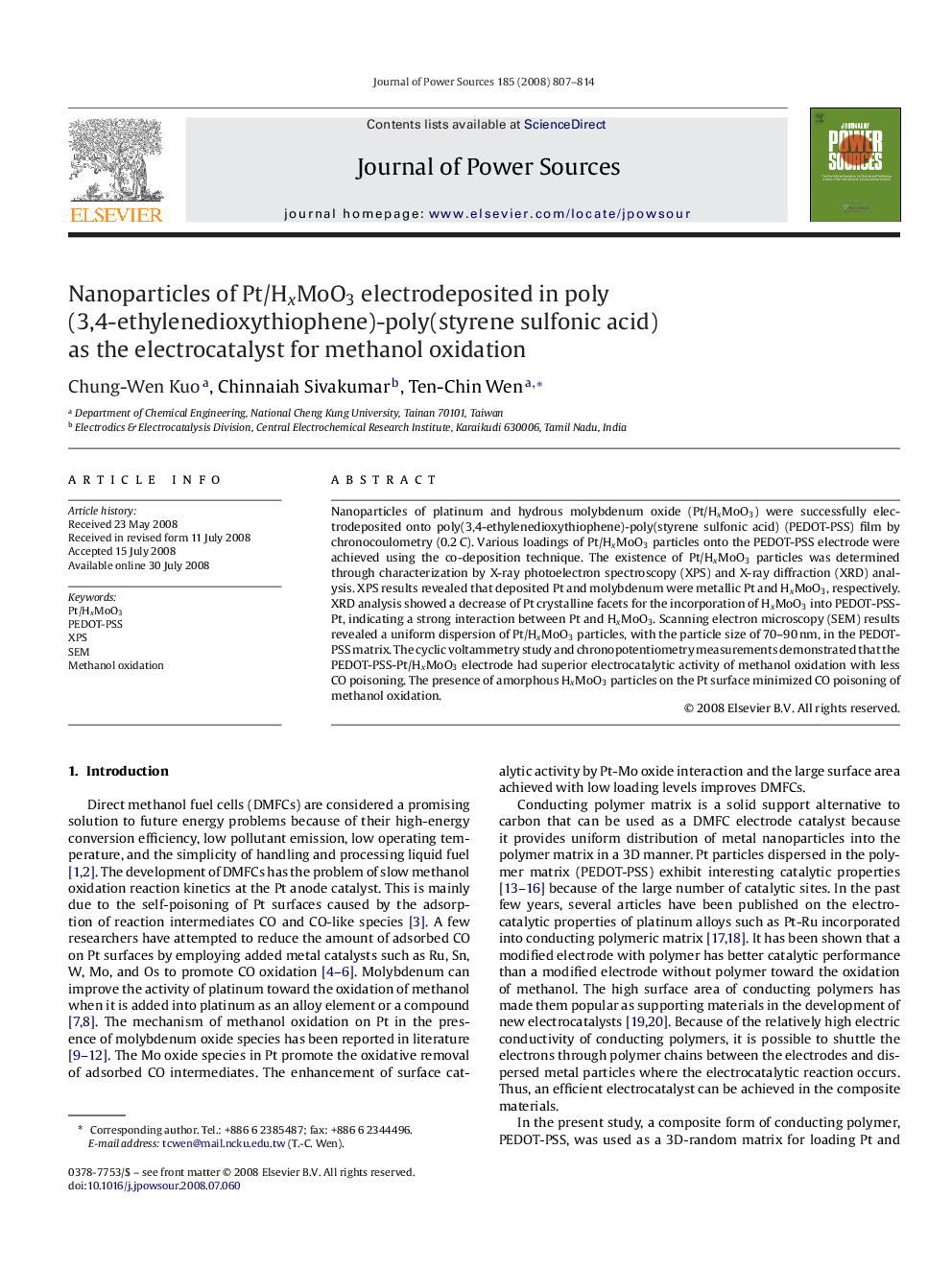| Article ID | Journal | Published Year | Pages | File Type |
|---|---|---|---|---|
| 1290184 | Journal of Power Sources | 2008 | 8 Pages |
Nanoparticles of platinum and hydrous molybdenum oxide (Pt/HxMoO3) were successfully electrodeposited onto poly(3,4-ethylenedioxythiophene)-poly(styrene sulfonic acid) (PEDOT-PSS) film by chronocoulometry (0.2 C). Various loadings of Pt/HxMoO3 particles onto the PEDOT-PSS electrode were achieved using the co-deposition technique. The existence of Pt/HxMoO3 particles was determined through characterization by X-ray photoelectron spectroscopy (XPS) and X-ray diffraction (XRD) analysis. XPS results revealed that deposited Pt and molybdenum were metallic Pt and HxMoO3, respectively. XRD analysis showed a decrease of Pt crystalline facets for the incorporation of HxMoO3 into PEDOT-PSS-Pt, indicating a strong interaction between Pt and HxMoO3. Scanning electron microscopy (SEM) results revealed a uniform dispersion of Pt/HxMoO3 particles, with the particle size of 70–90 nm, in the PEDOT-PSS matrix. The cyclic voltammetry study and chronopotentiometry measurements demonstrated that the PEDOT-PSS-Pt/HxMoO3 electrode had superior electrocatalytic activity of methanol oxidation with less CO poisoning. The presence of amorphous HxMoO3 particles on the Pt surface minimized CO poisoning of methanol oxidation.
